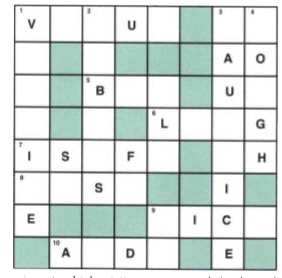The infectious and contagious bacterial disease that affects cattle, buffaloes, horses, sheeps and goats is
Anthrax
Necrosis
Tick fever
Rinderpest.
The correct Answer is:A
Step by step video & image solution for The infectious and contagious bacterial disease that affects cattle, buffaloes, horses, sheeps and goats is by Biology experts to help you in doubts & scoring excellent marks in Class 12 exams.
Updated on:21/07/2023Topper's Solved these Questions
- KINGDOM MONERA (THE PROKARYOTES)BOOK - DINESH PUBLICATION ENGLISHCHAPTER - KINGDOM MONERA (THE PROKARYOTES)EXERCISE - CHECK YOUR GRASP
20 Videos
- KINGDOM MONERA (THE PROKARYOTES)BOOK - DINESH PUBLICATION ENGLISHCHAPTER - KINGDOM MONERA (THE PROKARYOTES)EXERCISE - CHECK YOUR GRASP
20 Videos
- KINGDOM FUNGI-MULTICELLULAR DECOMPOSERSBOOK - DINESH PUBLICATION ENGLISHCHAPTER - KINGDOM FUNGI-MULTICELLULAR DECOMPOSERSEXERCISE - CYG
19 Videos
- KINGDOM PLANTAE OR METAPHYTA BOOK - DINESH PUBLICATION ENGLISHCHAPTER - KINGDOM PLANTAE OR METAPHYTA EXERCISE - CYG
20 Videos
Similar Questions
Knowledge Check
When scientists first learned how to edit the genomes of animals, they began to imagine all the ways they could use this new power. Creating brightly colored novelty pets was not a high priority. Instead, most researchers envisioned far more consequential applications, hoping to create genetically engineered animals that saved human lives. One enterprise is now delivering on this dream. Welcome to the world of “pharming,” in which simple genetic tweaks turn animals into living pharmaceutical factories.
Many of the proteins that our cells crank out naturally make for good medicine. Our bodies’ own enzymes, hormones, clotting factors, and antibodies are commonly used to treat cancer, diabetes, autoimmune diseases, and more. The trouble is that it’s difficult and expensive to make these compounds on an industrial scale, and as a result, patients can face shortages of the medicines they need. Dairy animals, on the other hand, are expert protein producers, their udders swollen with milk. So the creation of the first transgenic animals—first mice, then other species—in the 1980s gave scientists an idea: What if they put the gene for a human antibody or enzyme into a cow, goat, or sheep? If they put the gene in just the right place, under the control of the right molecular switch, maybe they could engineer animals that produced healing human proteins in their milk. Then doctors could collect medicine by the bucketful. Throughout the 1980s and ’90s, studies provided proof of principle, as scientists created transgenic mice, sheep, goats, pigs, cattle, and rabbits that did in fact make therapeutic compounds in their milk. At first, this work was merely gee-whiz, scientific geekery, lab-bound thought experiments come true. That all changed with ATryn, a drug produced by the Massachusetts firm GTC Biotherapeutics. ATryn is antithrombin, an anticoagulant that can be used to prevent life-threatening blood clots. The compound, made by our liver cells, plays a key role in keeping our bodies clot-free. It acts as a molecular bouncer, sidling up to clot-forming compounds and escorting them out of the bloodstream. But as many as 1 in ,000 Americans are born with a genetic mutation that prevents them from making antithrombin. These patients are prone to clots, especially in their legs and lungs, and they are at elevated risk of suffering from fatal complications during surgery and childbirth. Supplemental antithrombin can reduce this risk, and GTC decided to try to manufacture the compound using genetically engineered goats.
To create its special herd of goats, GTC used microinjection, the same technique that produced GloFish and AquAdvantage salmon. The ompany’s scientists took the gene for human antithrombin and injected it directly into fertilized goat eggs. Then they implanted the eggs in the wombs of female goats. When the kids were born, some of them proved to be transgenic, the human gene nestled safely in their cells. The researchers paired the antithrombin gene with a promoter (which is a sequence of DNA that controls gene activity) that is normally active in the goat’s mammary glands during milk production. When the transgenic females lactated, the promoter turned the transgene on and the goats’ udders filled with milk containing antithrombin. All that was left to do was to collect the milk, and extract and purify the protein. Et voilà—human medicine! And, for GTC, liquid gold. ATryn hit the market in 2006, becoming the world’s first transgenic animal drug. Over the course of a year, the “milking parlors” on GTC’s 300-acre farm in Massachusetts can collect more than a kilogram of medicine from a single animal.
The author’s attitude toward pharming is best described as one ofAapprehension.Bambivalence.Cappreciation.Dastonishment.When scientists first learned how to edit the genomes of animals, they began to imagine all the ways they could use this new power. Creating brightly colored novelty pets was not a high priority. Instead, most researchers envisioned far more consequential applications, hoping to create genetically engineered animals that saved human lives. One enterprise is now delivering on this dream. Welcome to the world of “pharming,” in which simple genetic tweaks turn animals into living pharmaceutical factories.
Many of the proteins that our cells crank out naturally make for good medicine. Our bodies’ own enzymes, hormones, clotting factors, and antibodies are commonly used to treat cancer, diabetes, autoimmune diseases, and more. The trouble is that it’s difficult and expensive to make these compounds on an industrial scale, and as a result, patients can face shortages of the medicines they need. Dairy animals, on the other hand, are expert protein producers, their udders swollen with milk. So the creation of the first transgenic animals—first mice, then other species—in the 1980s gave scientists an idea: What if they put the gene for a human antibody or enzyme into a cow, goat, or sheep? If they put the gene in just the right place, under the control of the right molecular switch, maybe they could engineer animals that produced healing human proteins in their milk. Then doctors could collect medicine by the bucketful. Throughout the 1980s and ’90s, studies provided proof of principle, as scientists created transgenic mice, sheep, goats, pigs, cattle, and rabbits that did in fact make therapeutic compounds in their milk. At first, this work was merely gee-whiz, scientific geekery, lab-bound thought experiments come true. That all changed with ATryn, a drug produced by the Massachusetts firm GTC Biotherapeutics. ATryn is antithrombin, an anticoagulant that can be used to prevent life-threatening blood clots. The compound, made by our liver cells, plays a key role in keeping our bodies clot-free. It acts as a molecular bouncer, sidling up to clot-forming compounds and escorting them out of the bloodstream. But as many as 1 in ,000 Americans are born with a genetic mutation that prevents them from making antithrombin. These patients are prone to clots, especially in their legs and lungs, and they are at elevated risk of suffering from fatal complications during surgery and childbirth. Supplemental antithrombin can reduce this risk, and GTC decided to try to manufacture the compound using genetically engineered goats.
To create its special herd of goats, GTC used microinjection, the same technique that produced GloFish and AquAdvantage salmon. The ompany’s scientists took the gene for human antithrombin and injected it directly into fertilized goat eggs. Then they implanted the eggs in the wombs of female goats. When the kids were born, some of them proved to be transgenic, the human gene nestled safely in their cells. The researchers paired the antithrombin gene with a promoter (which is a sequence of DNA that controls gene activity) that is normally active in the goat’s mammary glands during milk production. When the transgenic females lactated, the promoter turned the transgene on and the goats’ udders filled with milk containing antithrombin. All that was left to do was to collect the milk, and extract and purify the protein. Et voilà—human medicine! And, for GTC, liquid gold. ATryn hit the market in 2006, becoming the world’s first transgenic animal drug. Over the course of a year, the “milking parlors” on GTC’s 300-acre farm in Massachusetts can collect more than a kilogram of medicine from a single animal.
The phrase “liquid gold” (line 71) most directly suggests thatAGTC has invested a great deal of money in the microinjection technique.BGTC’s milking parlors have significantly increased milk production.Ctransgenic goats will soon be a valuable asset for dairy farmers.DATryn has proved to be a financially beneficial product for GTC.
Given below is a crossword puzzle. Read the clues across and clues down, and fill up the blank squares.
Clues down
1. Germs or germ - substances introduced into the body to prevent occurrence of an infectious disease.
2. A disease caused by an infected dog that affects the central nervous system.
3. A disease in which the eyes, the skin and the urine turn yellow.
4. The disease pertussis is popularly known as whooping .......
Clues across
1. Category of pathogen that causes diseases like common cold and mumps.
5. This is the vaccine for preventing tuberculosis.
6. An organ usually affected by tuberculosis.
7. Jumbled spelling of one of the most common insect which visits our exposed foods and contaminates them.
8. Cover this part of your body by a handkerchief while sneezing to prevent droplet infection to others.
9. These may readily grow in your hair, if you do not wash it regularly.
10. A disease that weakens body's defence system against infections.
View Solution(1) The kind of pathogen which causes diseases like common cold and mumps.
(2)These may readily grow in your hair, if you do not wash it regularly.
(3) This is the vaccine for preventing tuberculosis.
(4) The disease pertussis is popularly known as whooping
(5)One of the most common insects that visit our exposed foods and contaminate them.
(6)A disease that weakens body's defence system against infections.
(7)Germ or germ substances introduced into the body to prevent occurrence of an infectious disease.
(8)A disease in which the eyes, the skin and the urine turn yellow.
(9)An organ usually affected by tuberculosis.
(10)A disease caused by the bite of an infected dog, and which affects the central nervous system.
(11)Cover this part of your body by a handkerchief while sneezing to prevent droplet infection to others.

View SolutionSyphillis is an infectious bacterial diseases caused by Treponema pallidum with 3 stages
(A) Infectious painless ulcers on the genitals - (i) First
(B) Blindness, heart trouble, aortic impairmnet - (ii) Second
(C ) Skin lesions, hairloss, swollen joints - (iii) Third
Which of the following is the correct match between the symptoms and stage?
View SolutionSelect the correct statements.
a. The most common form of prion disease that affects sheep is Creutzfeldt-Jakob disease.
b. A prion is a type of glycoprotein that can trigger normal proteins in the liver to fold abnormally .
c. Prions attack nerve cells producing naurodegerative brain disease.
View SolutionName the infectious disease which causes wasting of body parts. Give the scientific name of the pathogen and mention the body organs it primarily affects.
View Solution(A]: Rabies is an acute infectious disease of mammals affecting CNS to cause paralysis and death.
[R]: This is caused due to neurotropic filter- able bacteria in saliva of rabid animals.
View Solution
